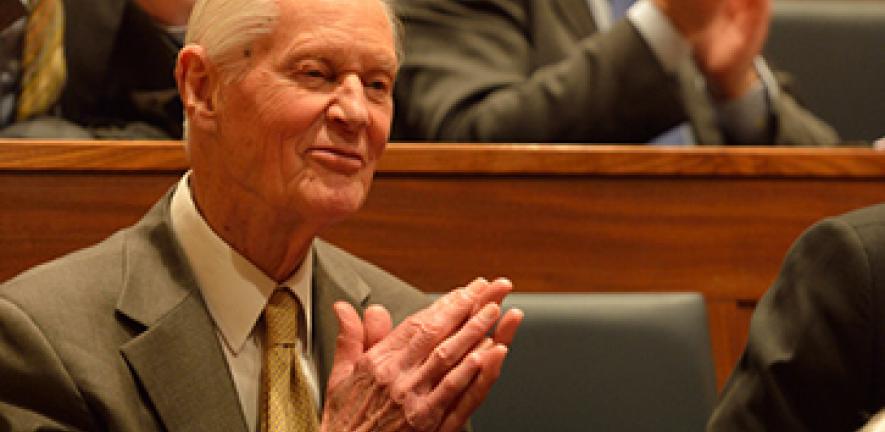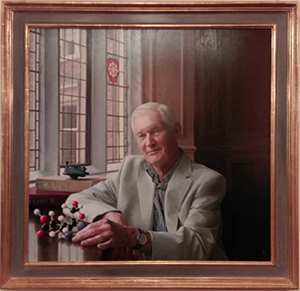
"Alan was a hugely distinguished organic chemist, much decorated, who made enormous contributions to the department," says Head of Department Professor John Pyle. "He will be sorely missed by his many friends and colleagues."
Sir Alan came to the Department of Chemistry in 1969 and was elected Professor of Organic Chemistry. He was later elected to the 1702 Chair of Chemistry. Though he retired from this post in 1992 - the year that he was knighted for his services to Chemistry - he remained active in the department long afterwards.
In March 2015, a special celebration was held to mark Sir Alan's 90th birthday. As well as a symposium held here in the Department of Chemistry (which you can read about in our alumni pages), there was a celebration at his college, St Catharine's, where a portrait of him was unveiled by the artist Paul Brason. Much of his research concerned the biosynthesis of vitamin B12 and at the unveiling, he explained the significance of the molecular model that he is seen holding in the picture.

"It represents porphobilinogen - the substance that is a very early starting material for the construction of vitamin B12 in the living systems. Interestingly this same small molecule is also the starting material from which the haem of haemoglobin is built in our bodies and in addition, it is used to build chlorophyll in green plants. So you can see that it is a rather important substance. I spent over 30 years of my scientific career working on it and on all the far more complex materials built from it."
But his long and distinguished career in organic chemistry might never have happened. The Second World War disrupted his schooling and in order to qualify to study at university, he took a correspondence course leading to the Higher School Certificate - the then equivalent of A Levels. He learned mathematics, physics and chemistry by himself from textbooks guided by his unseen tutors. "This study was done in the evenings after work and at the weekends," he told guests at his 90th birthday celebrations in 2015.
"I also needed practical classes for physics and chemistry and for these I went by bus to Salford Technical College each Saturday. The northern blitz on Manchester and Liverpool was going on and sometimes the bus was late because of blockages of the road from the previous night’s bombing. I studied in this way for at least two years but eventually took the examination and the results were amply good enough for University entrance." Sir Alan went to the University of Manchester to read Chemistry, and studied there with Alexander (later Lord) Todd. He subsequently followed Todd to Cambridge when he was appointed Professor of Organic Chemistry here.

